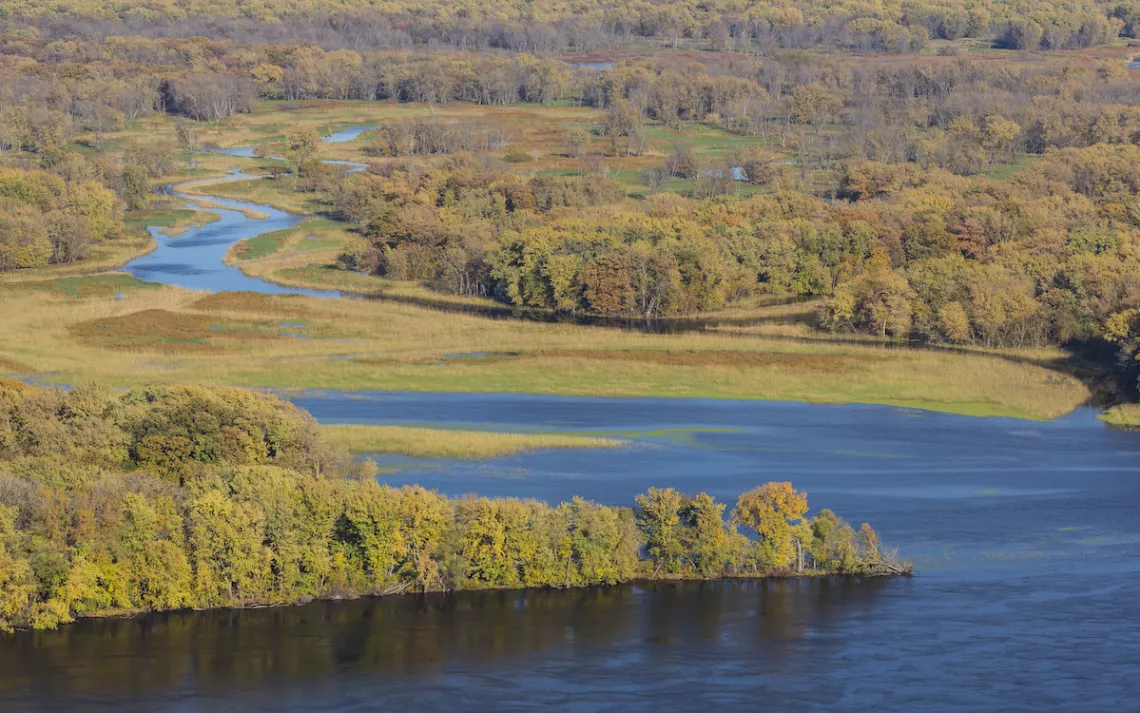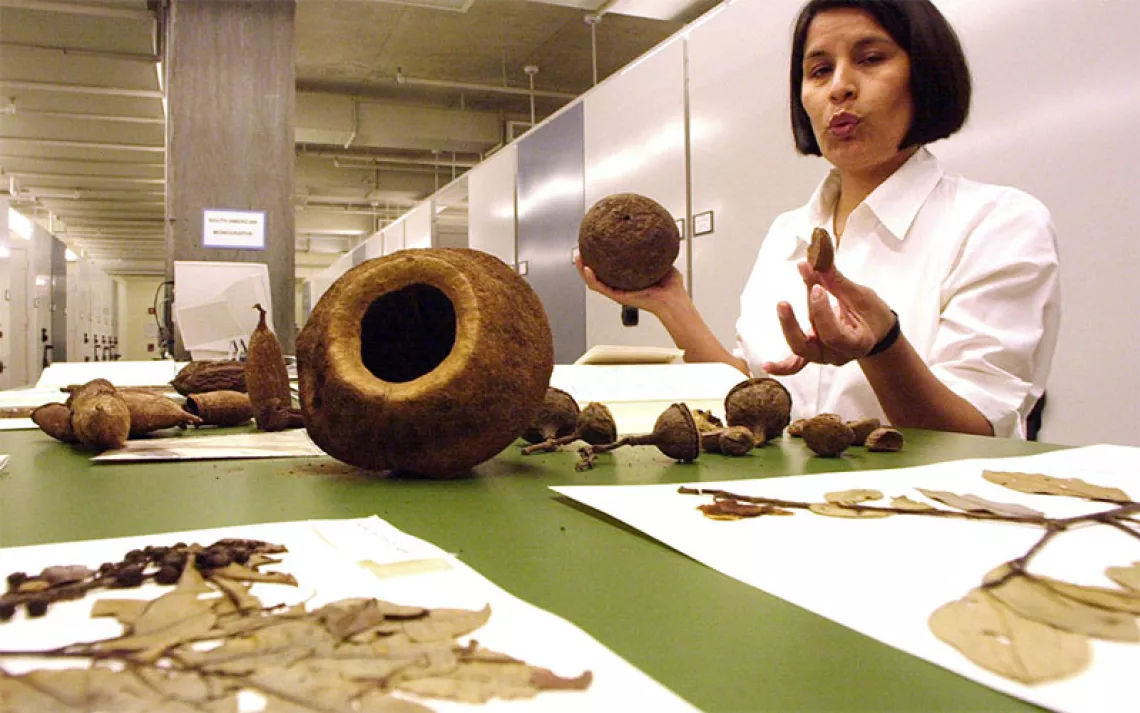New Maps Show How Groundwater Affects Lakes and Rivers
100 years of pumping has reduced stream flows by 50 percent in some areas

Photo by John_Brueske/iStock
On the surface, it’s pretty obvious how humans have altered lakes and rivers over the past century; dams have turned rivers into strings of reservoirs, the Mississippi River is more or less a concrete-lined sluice, and artificial ponds have proliferated by the thousands. Less apparent, but perhaps just as important, is how tapping into the groundwater systems that underlie the United States has impacted those streams and lakes as well. Now, a new detailed study in the journal Science Advances shows how much groundwater pumping has impacted those water bodies, in some cases reducing their flows by half.
Researchers have mapped the impact of groundwater pumping on surface water in individual watersheds before. But it’s only recently that computing power has improved enough to look at groundwater’s interaction with surface water, known as integrated modeling, on a scale as large as the United States. That’s what University of Arizona hydrologist Laura Condon and her coauthor Max Reed of the Colorado School of Mines decided to tackle in their new study. They mapped out most of the mainland United States excluding the coasts into squares 0.6 miles on each side, 32 million squares in all.
They then input data about groundwater down to 328 feet, temperature, precipitation, overland water flow, lateral groundwater flow, transpiration, and all the other factors that impact groundwater levels. The team ran computer simulations, one showing what the hydrologic system—rivers, streams, and lakes—looked like before larger-scale pumping began. The second shows how those systems behave after 100 years in which humans have pumped out 649 million acre-feet of groundwater, enough to flood the Intermountain West, plus most of California, with a foot of water.
The simulation found that all that pumping has radically reshaped the surface water in some places, especially those with a shallow water table, about two to 33 feet below the surface. Western Nebraska, western Kansas, eastern Colorado, and parts of the High Plains in particular have seen some streams and rivers where the flow of water has decreased by 50 percent; in some locations, the streams have simply dried up. The dropping water table makes future pumping more difficult and more expensive; lower groundwater levels can impact ecosystems like wetlands and kill off keystone species like cottonwood trees.
“We showed that because we’ve taken all of this water out of the subsurface, that has had really big impacts on how our land surface hydrology behaves,” Condon said in a statement. “We can show in our simulation that by taking out this groundwater, we have dried up lots of small streams across the US because those streams would have been fed by groundwater discharge.”
It turns out that groundwater is an important buffer for many surface streams and lakes and vegetation. In dry years, groundwater seeps into lakes or streams, bolstering water levels. The same goes for trees and plants—even when precipitation is below average, a robust groundwater supply can help tide them over for a few bad seasons. But pump that water out and those ecosystems no longer have a natural safety net.
There are other consequences of overdrawing from underground aquifers. In coastal areas, it can lead to incursions of seawater and in other areas can lead to groundwater contamination, lowering of the water table, and land subsidence.
A couple of big rainstorms, in most cases, are not enough to recharge groundwater supplies. It often takes a long time for precipitation to infiltrate the water table, meaning it’s hard to recharge groundwater as quickly as its pumped out. That means managing subsurface water is critical. “The crazy thing about our groundwater system is that it’s both a pro and a con. It’s really slow moving, which is great because it will buffer out our wet and our dry years, because when we have a dry year, the groundwater doesn’t respond instantly, and we still have water that can discharge into our streams,” Condon says. “But a negative of the system is that infiltration is slow, and it will take a long time to fill our aquifers.”
For instance, after California’s drought officially ended earlier this year, many surface reservoirs were on the rebound. But years of pumping have decimated groundwater supplies, which may take much, much longer to recharge.
Groundwater only accounts for about 25 percent of available freshwater in the United States. But in western states and areas of the Southwest where surface water is hard to come by, it’s particularly important. That’s why all of those states have implemented groundwater management regulations, with California, the last to do so, passing its Sustainable Groundwater Management Act in 2014, which requires permits to pump in certain basins. Prior to that, the law more or less said if you can pump it, the water is yours.
Currently, the legal framework surrounding groundwater varies from state to state and is a highly complex legal nightmare involving property rights, the public interest, and in a few select cases, ecological impacts. That’s why the Water in the West program, a joint venture between Stanford University and the Bill Lane Center for the American West recently launched its License to Pump dashboard, a visual representation of the groundwater basins and pumping regulations surrounding them in hopes of clarifying the issues. “Some things are just best done visually, even in nuanced fields like the law,” Geoff McGhee, the explanatory journalist who co-created the project said in a statement.
Condon hopes that her new maps will also help people visualize the landscape of unseen groundwater and will help integrate conversations about groundwater and surface water. “I hope that this study really helps raise awareness with the broader public about how connected groundwater and surface water are. If we’re using groundwater, we don’t just have to worry about running out of groundwater someday,” she says. “We also have to worry about the fact that when we’re drying out the subsurface, and we can be taking water from streams, we can be taking water from plants and that we can be losing this really important buffer that helps us sustain ecosystems.”
 The Magazine of The Sierra Club
The Magazine of The Sierra Club



